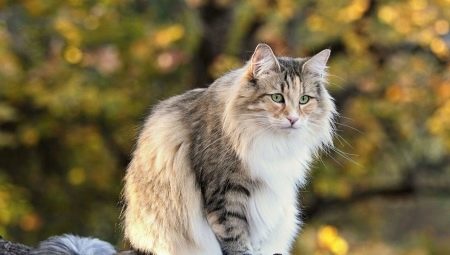Norwegian cats are descendants of wild forest animals living in dense thickets and rocky areas of Norway. Living conditions in harsh climatic conditions gave these creatures a fluffy thick fur coat with warm undercoat, the ability to easily withstand cold and excellent health. Domesticated cats retained their wild appearance, but at the same time acquired a soft and flexible character.
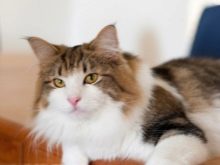


Origin history
According to its characteristics, the Norwegian forest cat is comparable, perhaps, to the Maine Coons, which are popular in all countries of the world. There are many legends about the appearance of cats of this breed. Scandinavian myths tell of the unusually beautiful goddess of love and war Freya, who moved around the sky in a chariot drawn by Norwegian cats.
Directly from magical legends, the Norwegian pussies moved to the Viking ships, where they actively exterminated ship rats. Breeders from the USA with great pride tell the story of the first Norwegian who set foot on American soil from a ship of the famous navigator Leif Erickson at that time.
According to some sources, the history of modern Norwegian cats began four centuries ago, in those days, due to living in the northern regions, animals formed a thick and long coat of wool with high water-repellent characteristics. Most researchers are inclined to believe that Angora cats were the ancestors of these creatures.
In the XVI century they were brought to Norway, and over time, wild fluffy animals were able to successfully adapt to difficult living conditions in harsh climates. They ran, climbed tall trees, and even fished, so they got tenacious strong claws.
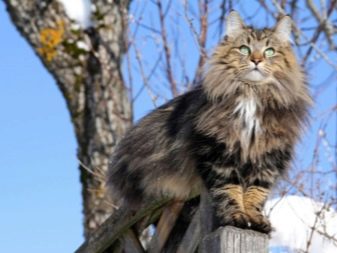

According to another version, the breed got its start from crossing wild animals brought by the Vikings from Scotland. If you look closely at the paintings and engravings depicting the goddess Freyja, then in the image of the animals you can see a clear resemblance to those same Norwegian forest cats. There is another legend - it says that Norwegian cats became popular thanks to the clergyman famous in those years, who first found and described these animals, calling them predatory cats. These creatures are often mentioned in the Scandinavian epos - in ancient legends they are represented in the form of a cat with a long and very fluffy tail.
In the postwar years, the breed almost disappeared from the face of the earth - at that time animals began to cross everywhere with cats of some other breeds. Thanks to the actions of environmental scientists, an official decision was made on measures to preserve the population of Norwegian forest cats. A special commission was created, which oversaw the process of breeding animals, breeders brought their pets there, and if they had many common characteristics with the standard Norwegian breed, then the pets were registered.
Only after that the animals got the full right to speak at international exhibitions. Thanks to these measures, it became possible to preserve animals with pronounced species characteristics. The Norwegian forest cat was officially approved only in 1977, and the peak of popularity came in 1985 - from that moment the animal came to America and Russia, where these fluffy pets immediately won the hearts of breeders.

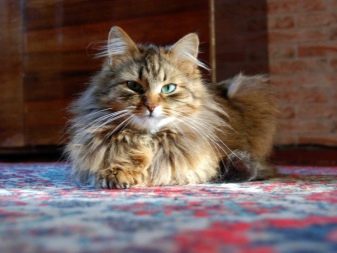
Description
The main features of the Norwegian forest cat: a strong torso, thick coat, large size and very graceful movements. Representatives of these animals are characterized by slow growth and reach puberty only in 4-5 years.
In accordance with the approved breed standard, the following features of animals of this species can be distinguished.
- Weight. The weight of an adult cat is 9-10 kg, females are slightly lighter.
- Height. The length at the withers is approximately 30-45 cm.
- Color. In accordance with the standards, the color of the animal can be any, with the exception of colors obtained during hybridization. These are cinnamon, chocolate and lavender.
- Character. Norwegian cats are very sociable, friendly and playful, they are wary of strangers, but try to remain calm in any situation.
- Intelligence. This is one of the smartest breeds of cats, even the youngest kitten can always be quite quickly accustomed to a claw-claw and a tray. Animals understand words, tone of voice and gestures very well, learn quite easily, and learn the rules of behavior at home from a very early age.
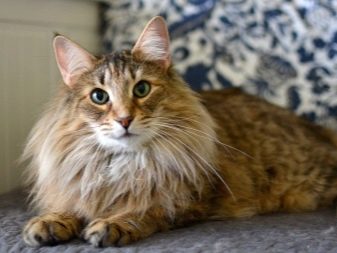
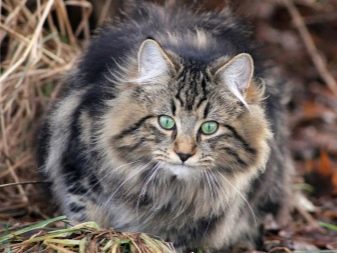
The Norwegian cat looks pretty serious, so it is often represented at various exhibitions. The following parameters for evaluating the breed are distinguished:
- the head resembles a triangle with equal sides;
- the neck is even, shortened;
- flat forehead;
- straight profile;
- the chin is strong, slightly rounded;
- mustache pads are not indicated;
- ears of large or medium size, their base is expanded, there may be brushes on the tips;
- eyes are large, almond-shaped, with the outer edge slightly higher than the lower;
- body of medium length with pronounced muscles;
- the backbone is strong;
- hind limbs of medium length, while tufts of wool are noticeable between the fingers;
- double wool;
- pronounced collar.
Any deviations from the approved standards are considered disqualification.
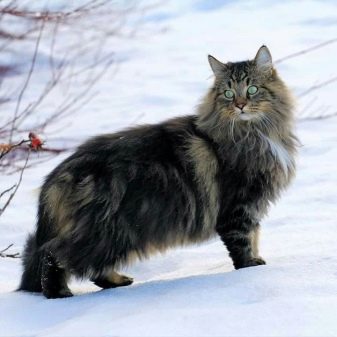
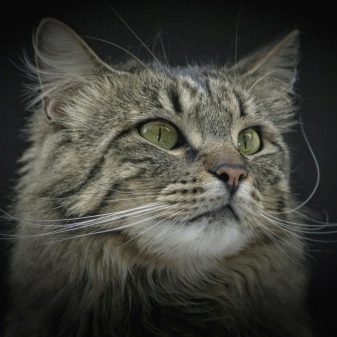
Character Features
Owners of Norwegian forest cats agree that the representatives of these cats are exceptionally calm, balanced and intelligent creatures with an unpretentious and attractive character. They are suitable for keeping in the house: they communicate well with children and adults, like to play active games and prefer to be in constant contact with the breeder. Cats of this species need frequent communication.
However, like people, sometimes they need periods of rest - at these moments they retire for a short rest, but immediately after it they again bestow their masters with affection and playful mood.
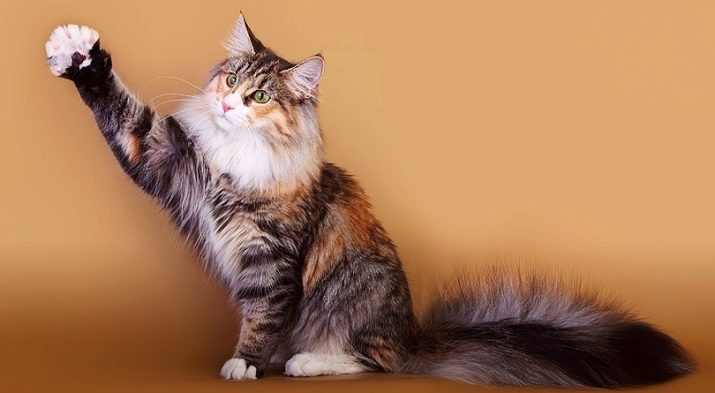
This fluffy pet will never scratch, get angry and get his way through the manifestation of aggression. Even if these cats don’t like something, they will still accept everything that happens with calm and dignity. It is very important that Norwegian forest cats are absolutely not vindictive, they are inherently incapable of harming humans. The animal perfectly adapts to both domestic life and street hustle and bustle: in the courtyard they show energy and mischief, but, having crossed the threshold of their home, they turn into grateful and submissive pets.
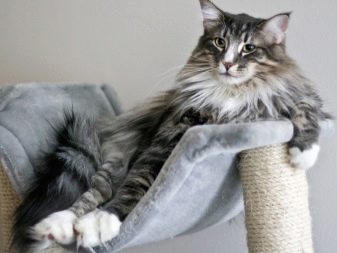

These cats are equally fond of all their owners, but need a careful response. These cats like to be stroked, picked up and combed. But they do not suffer kisses. A characteristic feature of these cats is hospitality. They meet all the people who come to the house first, immediately show interest, sit next to them and give other signs of attention. However, it is unlikely that a stranger can take him to his knees - the pet will need time to get used to the guest.
It is believed that such cats will be the best companions for single people.

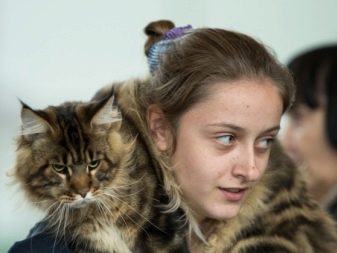
Norwegian forest cats are very loyal to other pets: they do not begin to fight with them for the attention of the owners, and do not try to dominate. Little children are sure to be delighted with playing with cats - the fact is that these pussies reach their full maturity by only 4 years old, so do not be surprised that your adult cat will start to run around the bow on a rope, like a very small kitten.
Norwegian cats are distinguished by a rather loud voice, much more sonorous than among representatives of many other breeds, but they do not use this “weapon” and never bother their owners with annoying meow.
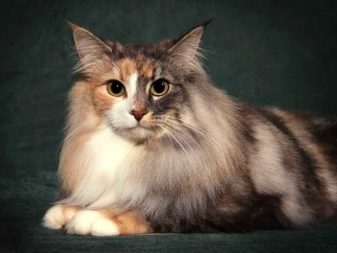
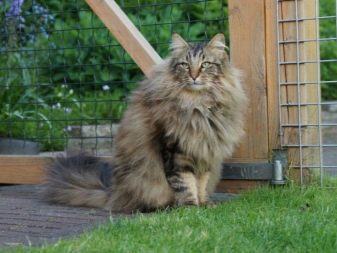
How many cats live?
Everyone who plans to become the owner of a charming Norwegian cat will probably be concerned about how many of these pets live. It should be noted that representatives of this breed are quite hardy and differ in excellent health. With proper care, the lifespan of these cats is 10-14 years.
There are cases when cats live up to 18 years in comfortable conditions and with balanced feeding.
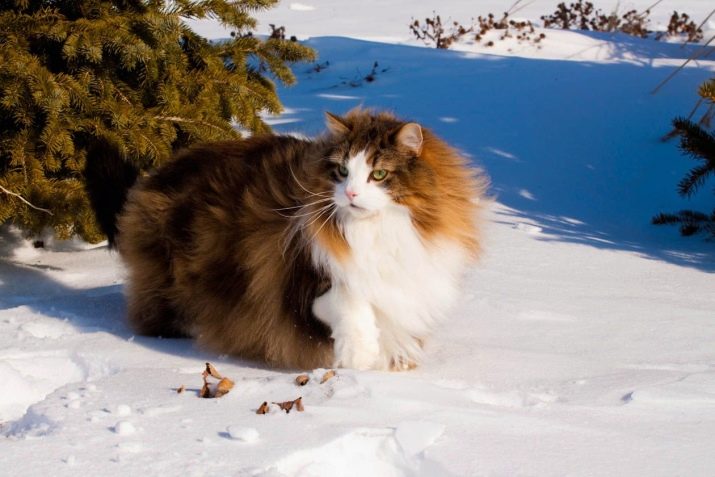
Color options
There are several common colors of the Norwegian forest cat.
- Solid color. Usually presented in black, gray, blue, as well as white colors.
- Smoky. For these varieties of cats, the color is characteristic, when the hair is white near the roots, and the hairs are dyed only half.
- Warm colors. Representatives of the breed have a wide variety of shades of red and red.
- Tabby. As a rule, this is a striped color.
- Marble. This is a pronounced marble pattern in the prevailing shade.
- Combinations of white. Typically, Norwegian cats are black and white and reddish white, less common are tricolor and some other variations. This unusual coloring is explained by the fact that the ancestors of modern Norwegian cats lived in natural conditions.
It is known that in the wild, the color of animal hair is often adjusted to the surrounding landscape so that prey does not notice the predator to the last.
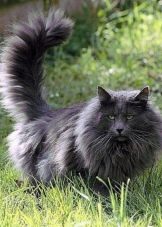
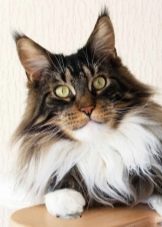
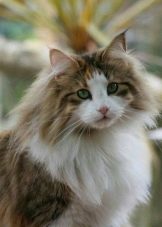
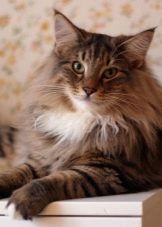
Standards impose fairly stringent requirements for the coloring of the breed. So, plain colors should not include even the smallest inclusion of other shades.
Tortoiseshell, marbled and spotty colors must certainly have a well-defined pattern, wool is the ideal option, which is in harmony with the shade of the iris.
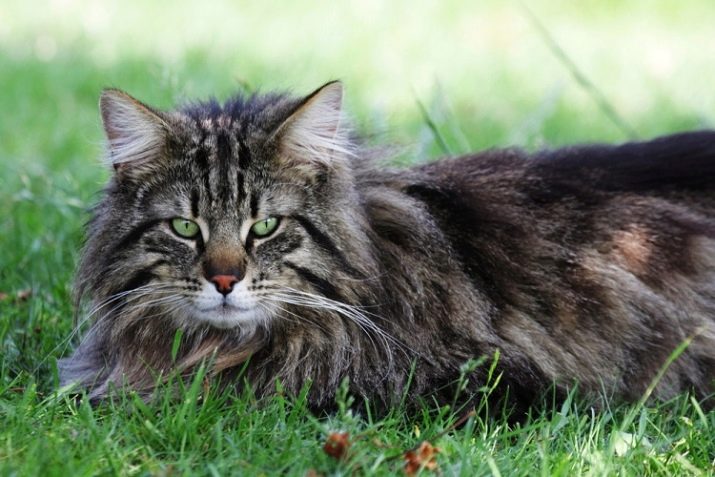
Conditions of detention
Caring for a Norwegian forest cat is a snap. The main point of keeping the animal comes down to the need to daily comb the long hair of the pet. Cats molt quite strongly, especially in the off-season, so care must be systematic, otherwise the coat begins to become tangled and can spread throughout the living room.
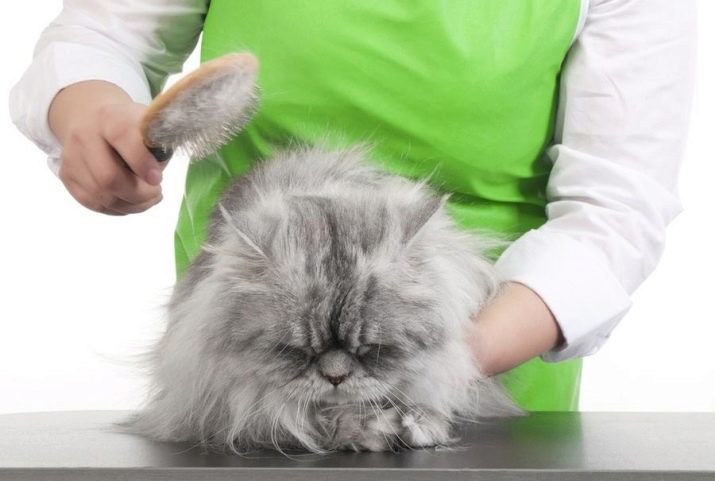
It is better to refuse the use of puderokers when caring for wool, it will be correct to use scallops with long infrequent teeth. From time to time you need to comb the animal with a comb with short teeth. It is very important to monitor the ears and eyes of the pet: the ears should be periodically wiped with a cotton swab, and the eyes are regularly washed with tea leaves or a weak solution of furacilin.
Cats of this species need constant movement and physical activity: this will allow the pet to maintain good shape, strengthen immunity and splash out the accumulated energy. It is advisable to bring such an animal to the inhabitants of a private house, and if the pet is kept in the apartment, then you need to regularly take him out for a walk, in this case you should put a harness or a leash on the pet.

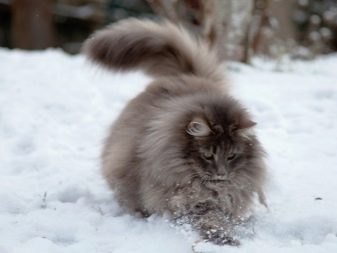
Special attention should be paid to the status of the cat tray. The fact is that cats of this breed have very fluffy paws, therefore it is advisable to use a wood coarse filler, and in front of the tray a rubber mat will not be superfluousso that the pet can dry its paws after the toilet.

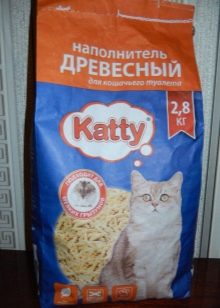
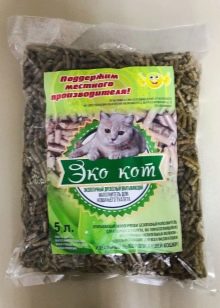
As for the training, the Norwegian cat with anger will reject any attempt by the breeder. You can’t force your pet to execute commands with a loud scream and, all the more, physical strength, otherwise you will quickly lose the trust of your pussycat.
The only thing you need to get used to is the tray, the leash and the harness, and in everything else you should provide the animal with the opportunity to behave naturally and just enjoy playing with his Norwegian cat.
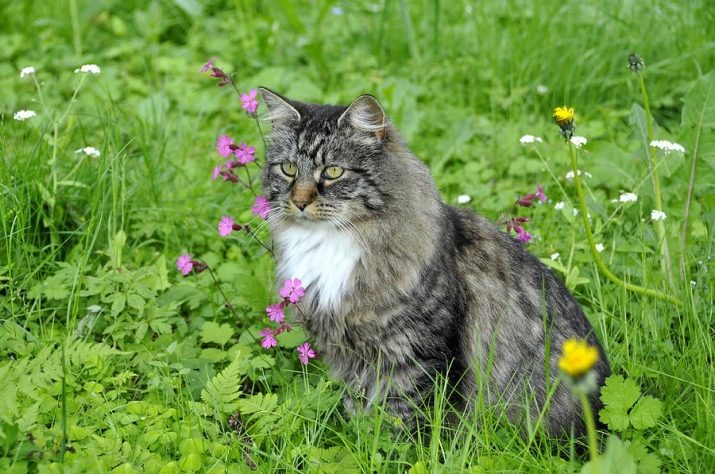
Feeding
For full growth and development, the animal must receive a balanced diet, consisting of all the necessary proteins, fats and carbohydrates, enriched with useful micro and macro elements. Premium feed is best, but you can feed your pet with natural foods. In this case, the diet should include the following groups of products.
- Meat. Feeding the animal with veal, beef, chicken and turkey is allowed, from the offal you should occasionally offer the liver, lung and heart. But smoked meats and sausages should be avoided, it is also not recommended to include ducklings, pork and kidneys in the menu.
- Dairy products. Many people think that cats of all ages like milk. However, this is a common misconception. The fact is that in the body of adult animals enzymes that promote the digestion of milk are not produced, so the product can only be offered to very small kittens, starting from 2 months, it simply is not absorbed in the body. And natural yogurt, fermented baked milk and low-fat cottage cheese will be a good source of calcium for pussies, so they should be part of the animal’s diet. In addition to milk, cream, sour cream and butter should be avoided.
- Vegetables. Of vegetables, cats can be offered shredded pumpkin, broccoli, zucchini and beets, they are added to the feed, and beans, potatoes and all kinds of exotic fruits should say a solid "no."
- Fish in the diet of pussies only marine low-fat is allowed, red varieties and river fish are not in the menu of the Norwegian cat.
- The eggs. Once a week, you can offer animals eggs, but keep in mind that cats eat only yolk, protein is harmful to them.

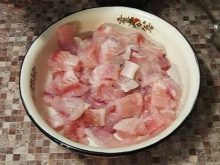

Breeding
If you didn’t get a cat for breeding, you should consider sterilizing or castrating your pet: cats in this case will not mark their territory, and cats after surgery become less susceptible to malignant neoplastic diseases.
If you plan to knit an animal, then you need to do this only after the pet has reached puberty. If the cat begins a new life early, then the growth of the animal will stop, pregnancy and childbirth will proceed painfully and seriously weaken the animal. The minimum allowable age of the first knit is 2 years, the optimal is 4.
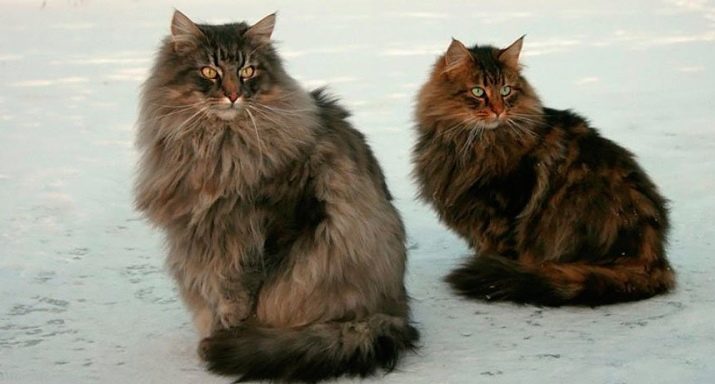
It is advisable to show the animal to the veterinarian before and be sure to carry out treatment for helminths.
A Norwegian forest cat should only be mated with cats of the same breed, otherwise the likelihood of weakened offspring with pronounced genetic abnormalities is high. Bearing kittens lasts about 9 weeks, usually without complications. At this time, it is very important to pay special attention to the diet of the animal: you should increase the daily dose of feed, as well as introduce special vitamin supplements with a high content of folic acid.
If you are determined to become a “parent” of a Norwegian, then it is advisable to purchase a kitten in a specialized nursery. Before buying, it is worthwhile to carefully examine the baby, paying special attention to the eyes, coat and activity of the animal. It is necessary to require a vaccination certificate from the breeder, to clarify all aspects of antiparasitic treatment.
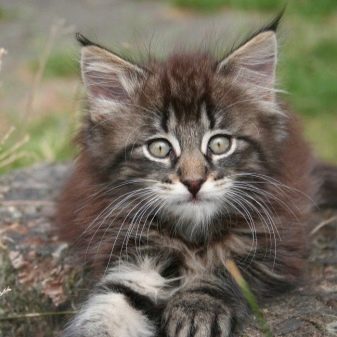

As a rule, such kittens are sold along with the pedigree. The cost of animals usually starts from 2 thousand rubles, however, there are no guarantees that for this amount you will receive a Norwegian forest cat. Even kittens with signs of defectiveness in reliable nurseries cost at least 5 thousand rubles, so it is better to make a purchase only from a trustworthy seller.

The final moments are influenced by the following points:
- breeder's reputation and the prestige of the nursery;
- location - usually in nurseries located in large cities, the cost of animals is slightly higher;
- color - cats of different colors are evaluated differently;
- kitten class: the degree of its compliance with standards, as well as the pedigree.
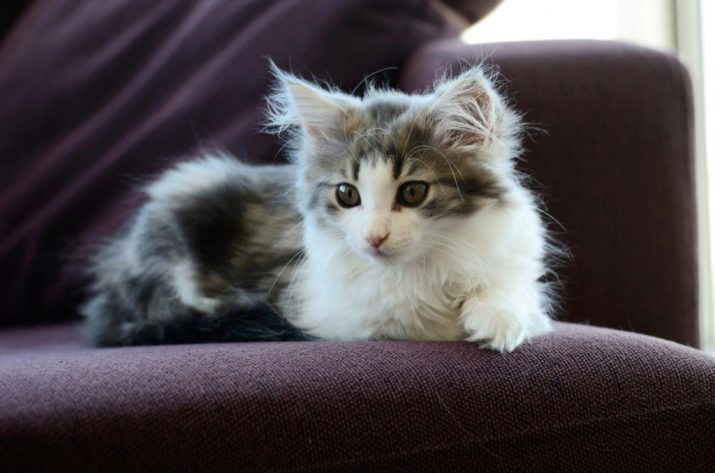
Purebred kittens with a full set of all necessary documents and an excellent pedigree, veterinary certificate and the presence of all necessary vaccinations are estimated at 50-70 thousand rubles, there are cases when the rarest samples cost even 150 thousand
Health
Forest Norwegian cat comes from wild animals, so it is naturally endowed with good health. With proper care and providing a balanced diet, she lives 15 years without pronounced health problems. In rare cases, the pet suffers from one of the following genetic diseases.
- Glycogenesis This pathology is associated with impaired glucose metabolism, which often causes serious liver damage. The disease is congenital, and most often sick kittens die before the age of six months.
- Pyruvate kinase deficiency. This problem is caused by a deficiency of red blood cells, which causes anemia in the animal. In the event of the development of such a disease, the cat needs a balanced diet and maintenance therapy. Subject to the recommendations, cats can live to a very old age.
- Obesity. Cats after castration are often obese. To avoid such an ailment, as well as cardiovascular diseases, which often appear cats with increased body weight, you should adhere to a balanced diet and create conditions for the physical activity of the pet.
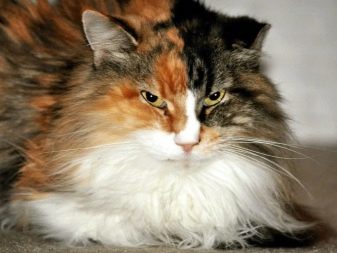
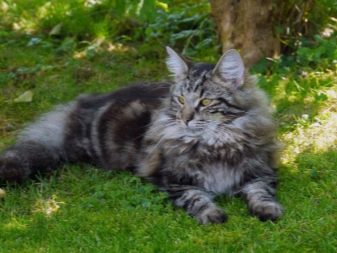
Keep in mind that the Norwegian forest cat is vaccinated without fail, the very first vaccinations are given to the pets in 1.5–2 months, at the age of 6–8 months they are re-vaccinated. In the future, vaccinations are carried out every year.

All about the Norwegian forest cat, see below.
